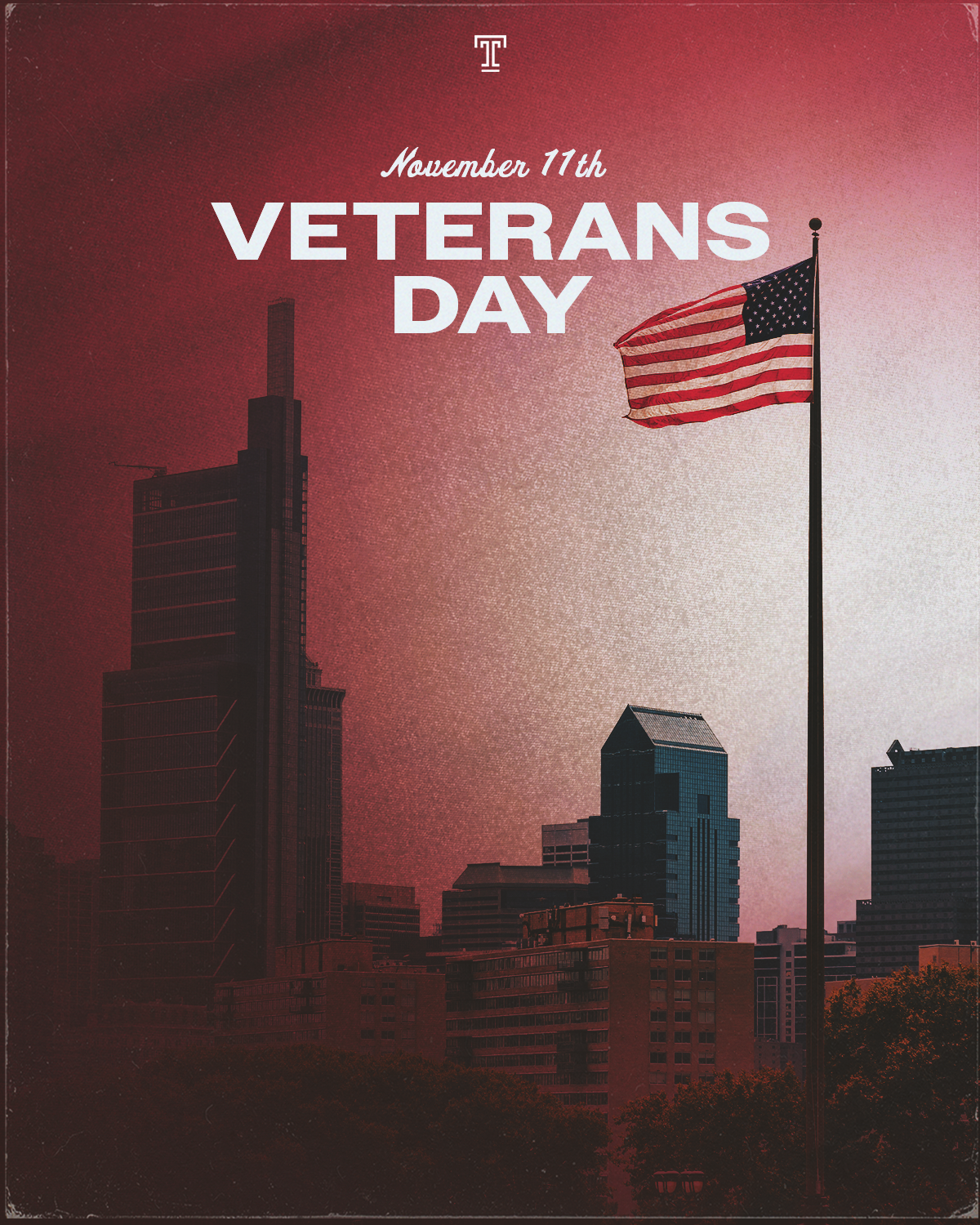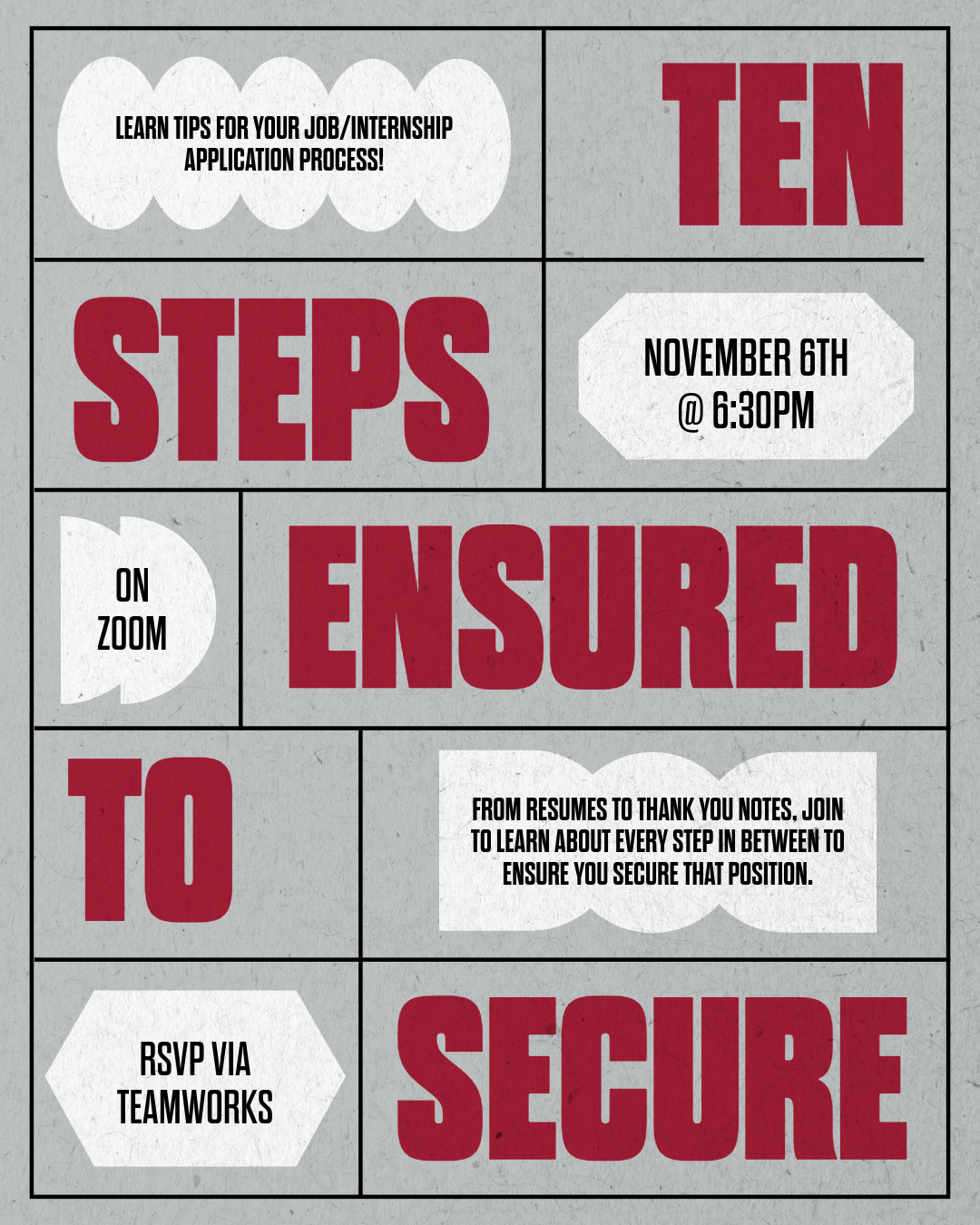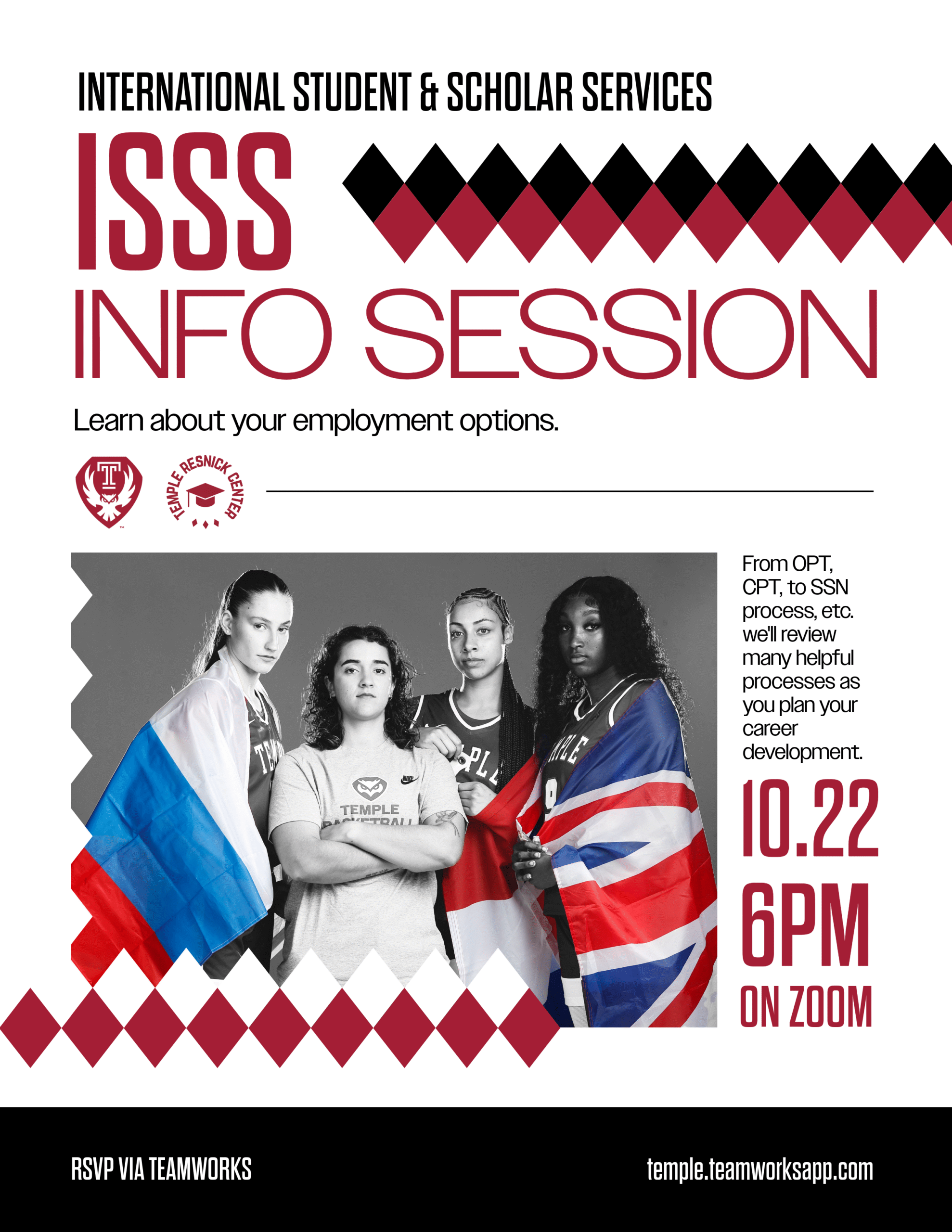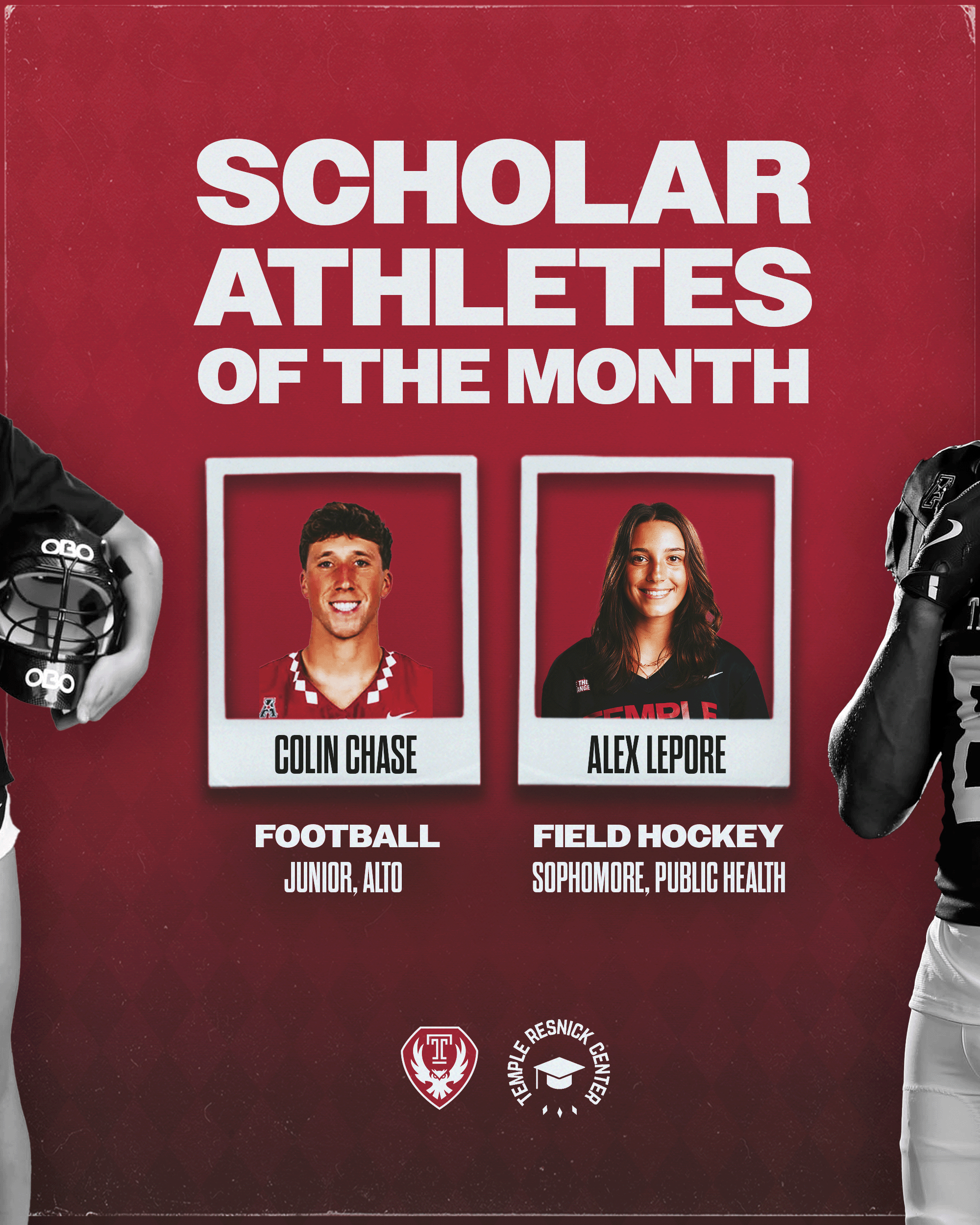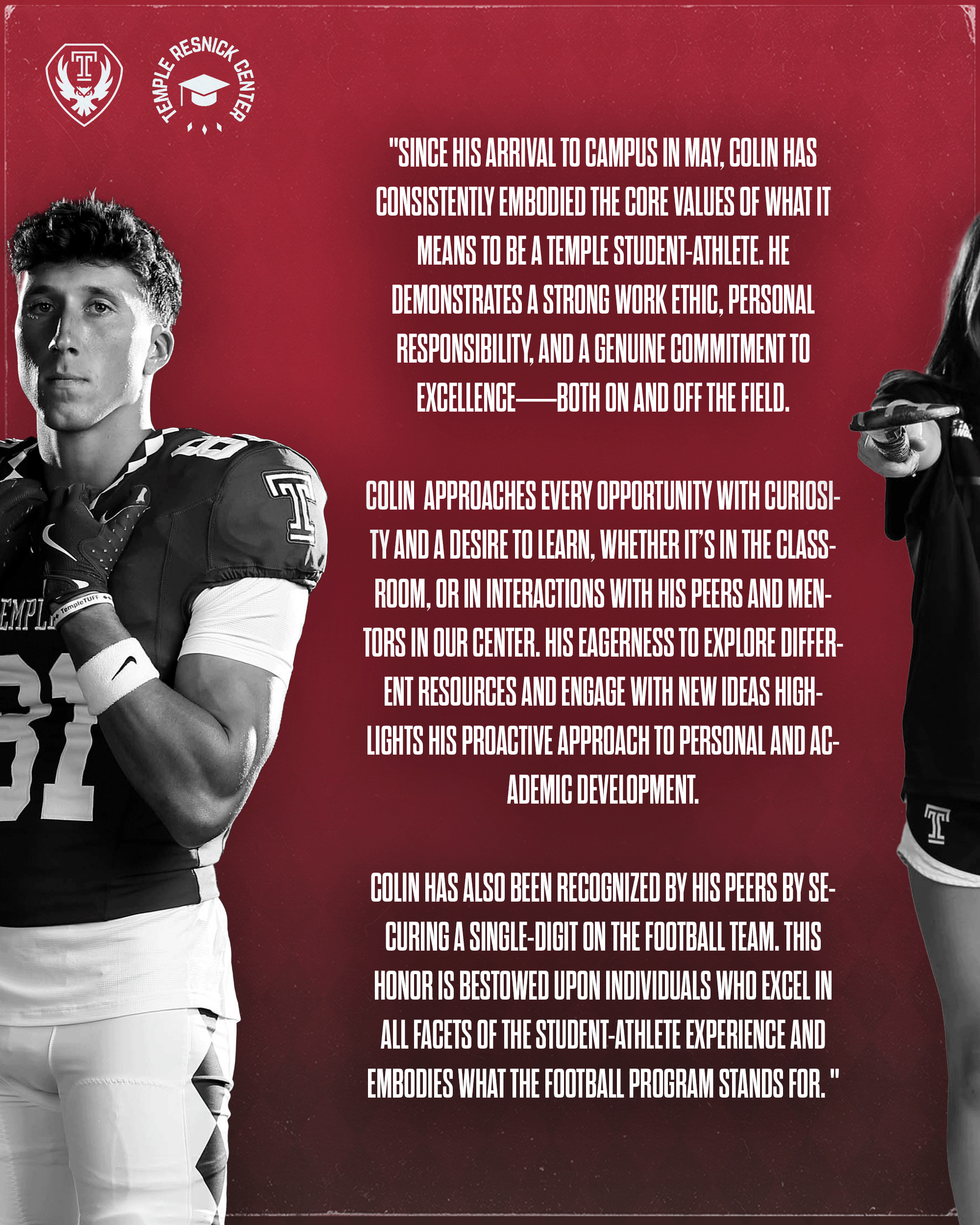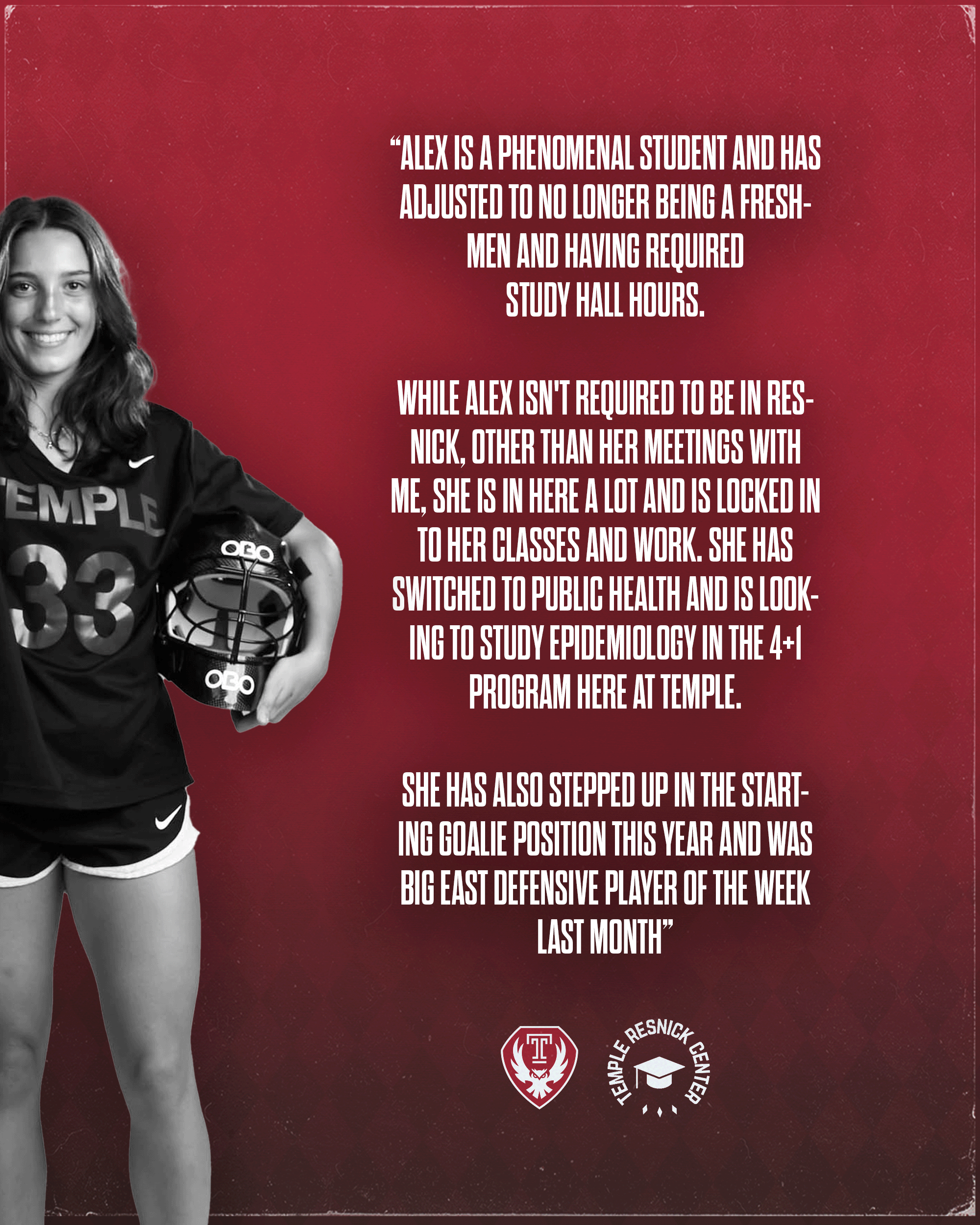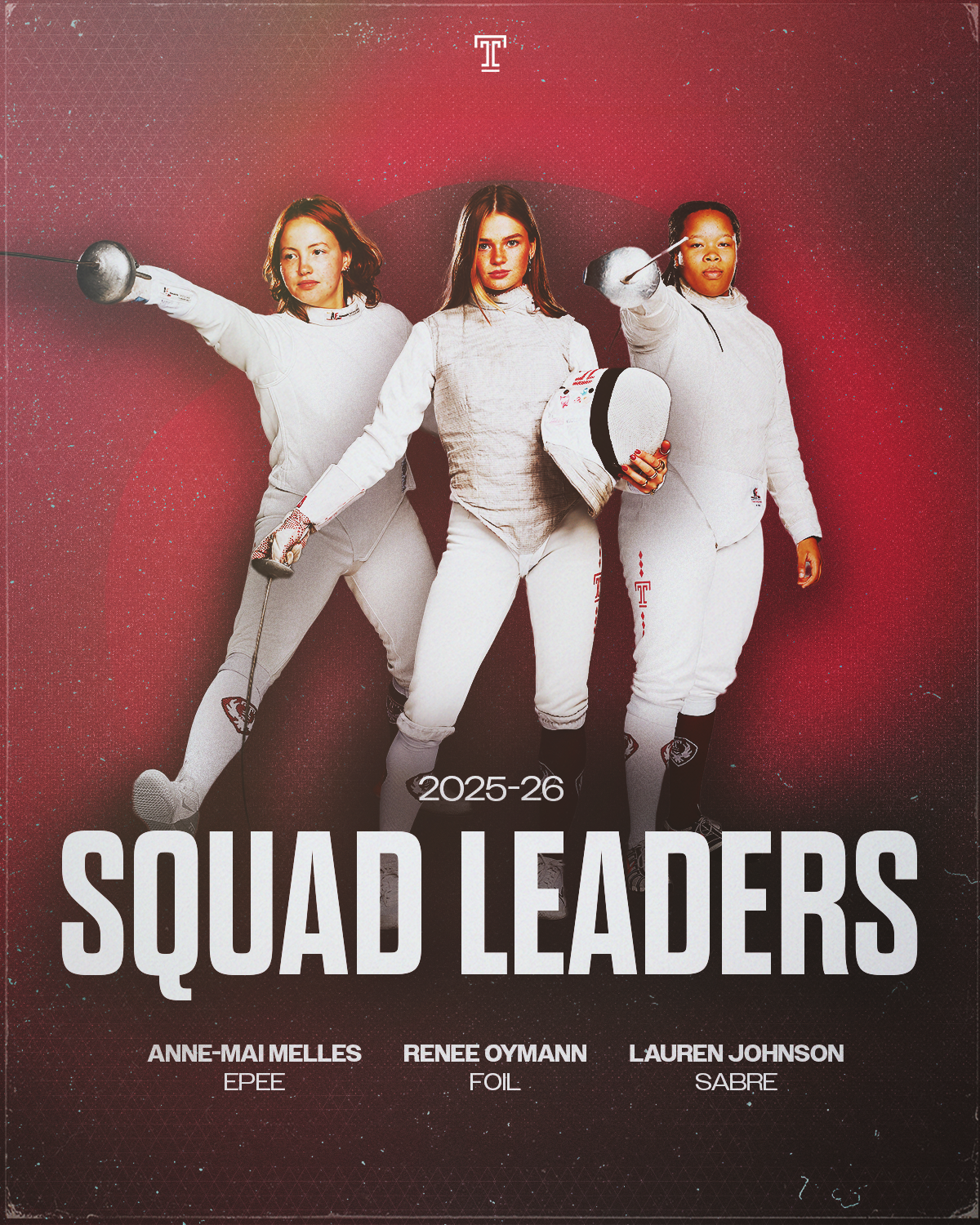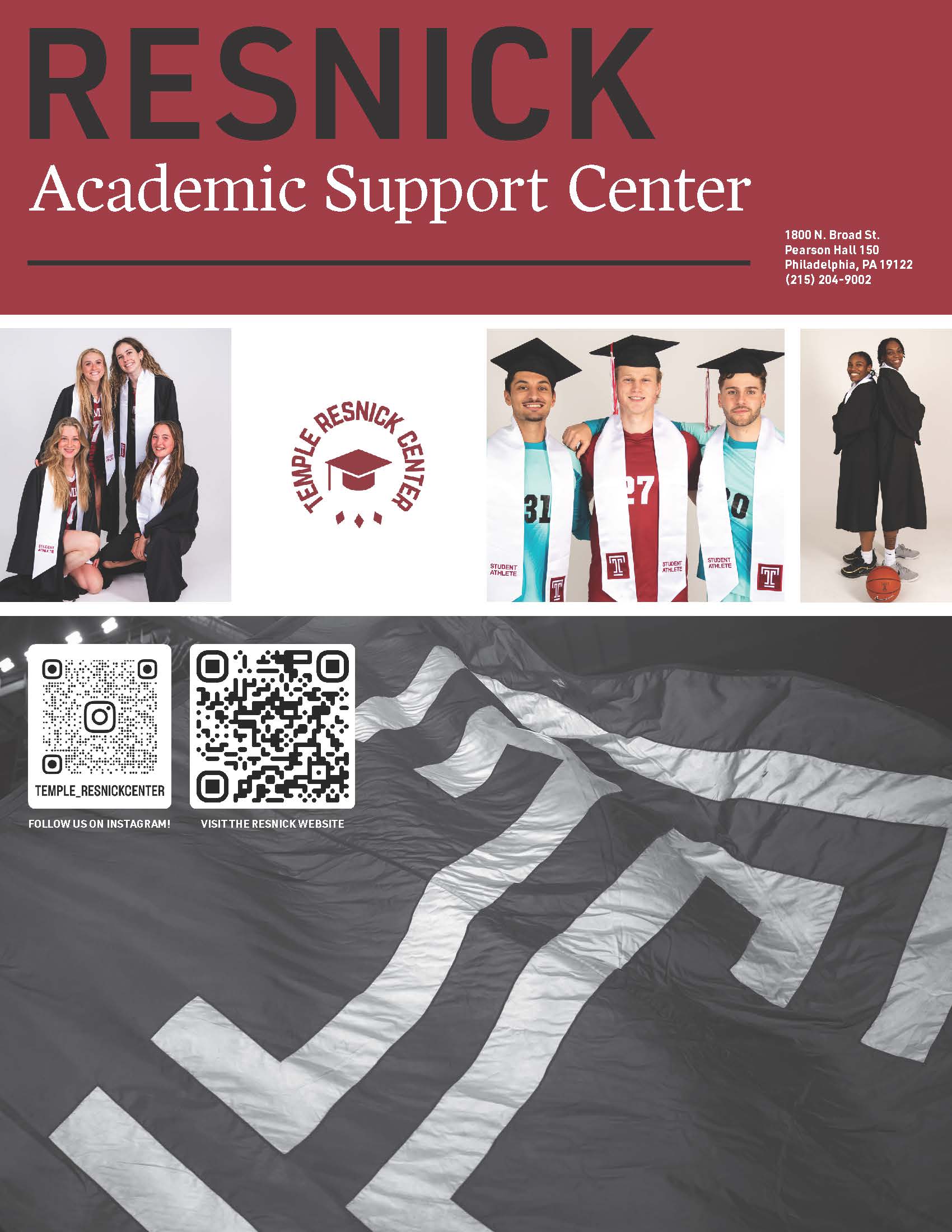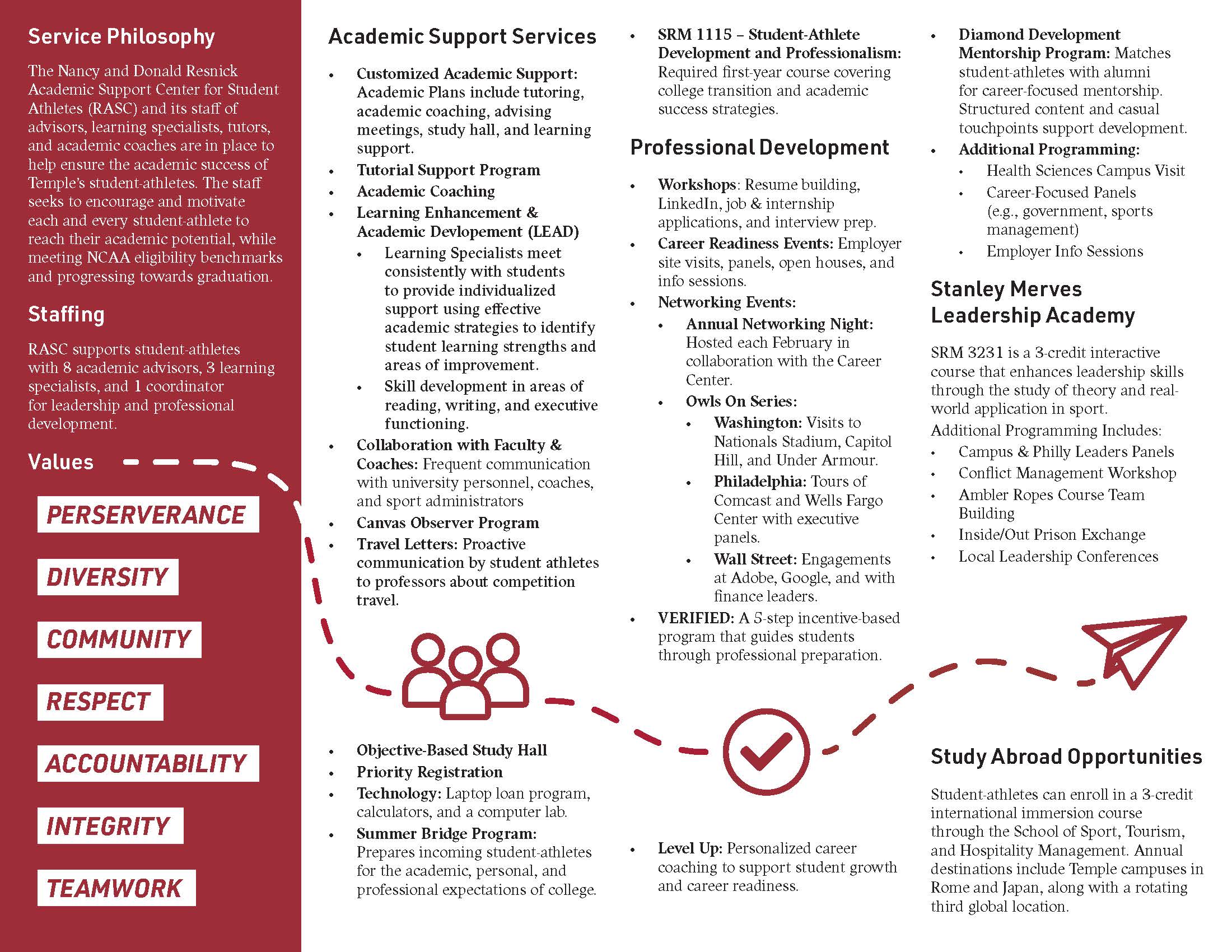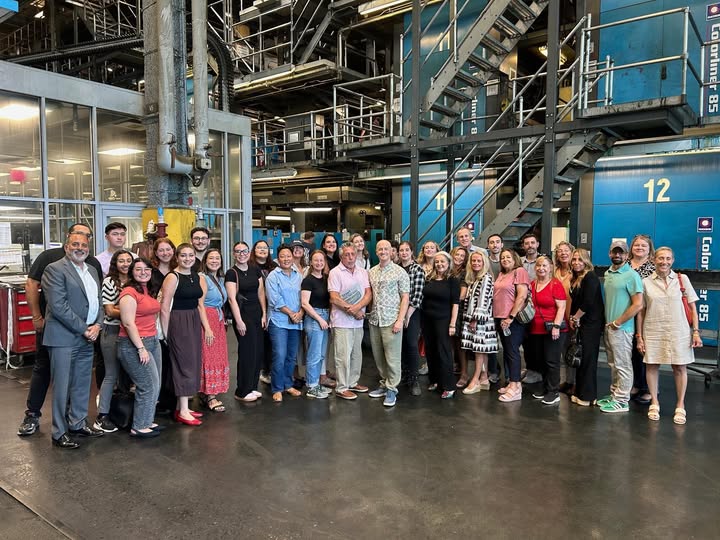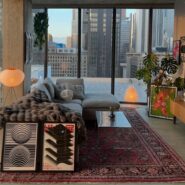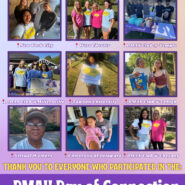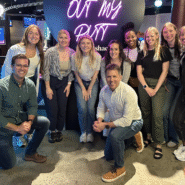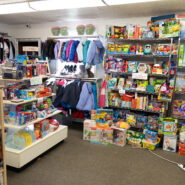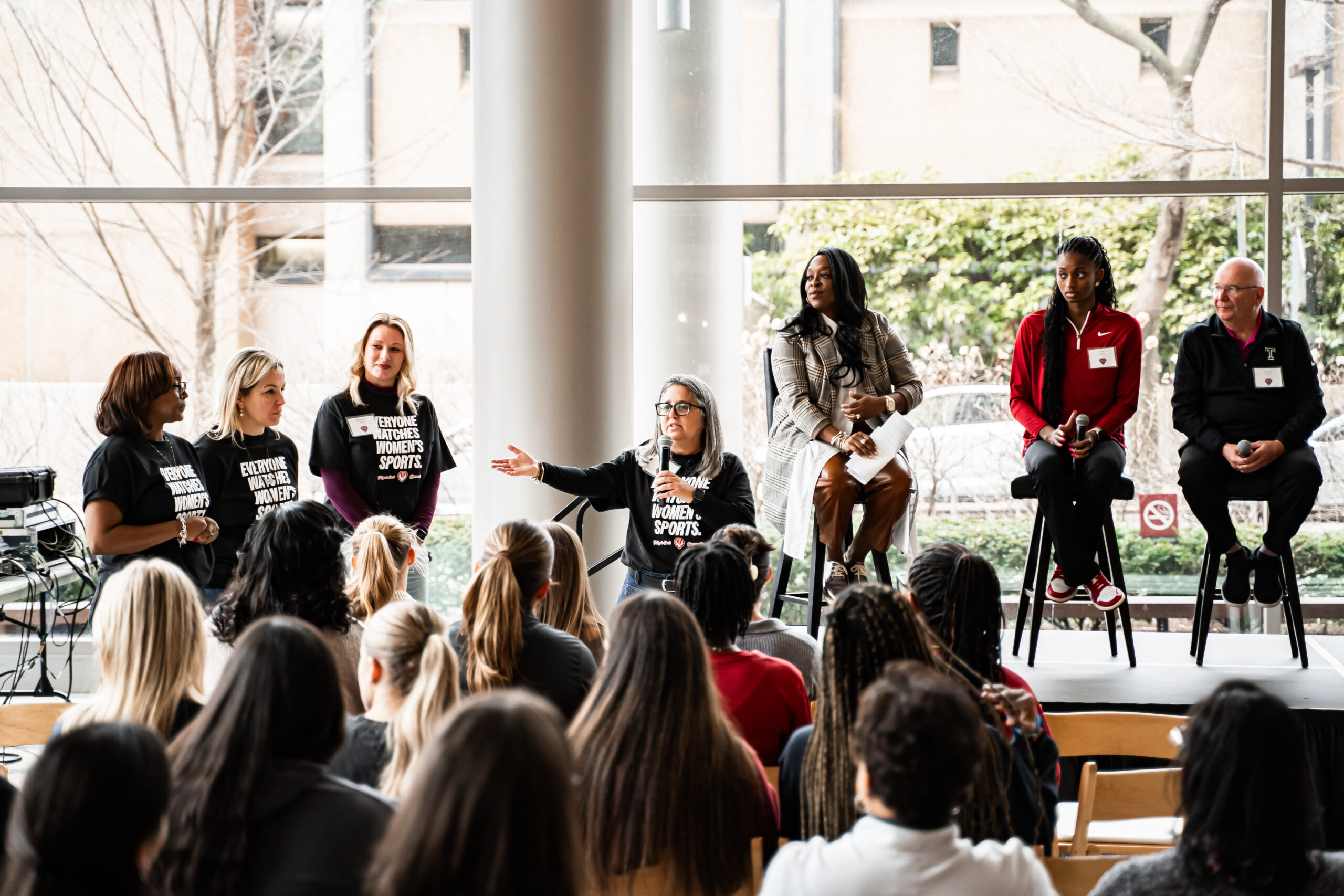
Balancing the Game: Designing with Multiple Teams at Temple
A behind-the-scenes look at how I balanced creativity, communication, and collaboration while designing for Temple’s student-athletes through the Resnick Academic Support Center and Temple Athletics.
Temple University’s Resnick Academic Support Center is a resource within Temple Athletics and the Provost’s office that provides academic advising, tutoring, and career development support for student-athletes, helping them balance success in both the classroom and their sport.
My internship with Temple’s Resnick Center gave me a clearer, more grounded understanding of what working in social design actually looks like day to day. I already knew I wanted to pursue a career in sports graphics, and the additional opportunity to collaborate with Temple Athletics showed me the behind-the-scenes structure that makes athletic communications run smoothly, especially in a collegiate setting.
At Resnick, I learned how much of design work depends on communication, collaboration, and flexibility. Our projects often relied on information readiness, so when schedules shifted or new details came in last minute, quick pivots were key. Working around other people’s timelines taught me how to manage my own time better and problem-solve under pressure, which is something no classroom can really replicate.
While my main focus was at the Resnick Center, I also collaborated with Temple Athletics to keep branding consistent across both teams. I acted as a kind of liaison, sharing assets, aligning visual styles, and creating occasional graphics like holiday and fencing content that matched Temple’s broader athletic identity. That crossover gave me a better understanding of how large organizations maintain cohesive branding even when multiple departments are involved.
One of the most positive aspects of the experience was the workplace culture. Everyone valued communication and mutual support, and it made the environment feel creative, organized, and genuinely enjoyable. I saw how much stronger the work becomes when people are open to feedback and collaboration, even across different roles.
I was also lucky to have supervisors who really cared. They weren’t designers themselves, but they offered guidance that pushed me to think critically about how my designs functioned in context, not just how they looked. That kind of mentorship made a huge difference in my confidence and professionalism.
If I had to give advice to anyone starting their first internship, I’d say to stay consistent and keep applying. Once you get the opportunity, show up ready to learn, listen closely, and take initiative. Especially if you’re the only creative on your team, it’s important to communicate your process and align your work with the team’s goals.
By the end of this internship, I gained more than just contextually strong portfolio work. I gained comfort in a professional, collaborative setting and a stronger sense of how to navigate real-world design workflows. It solidified not just my passion for sports design, but my excitement to keep creating in environments where teamwork and creativity meet.

